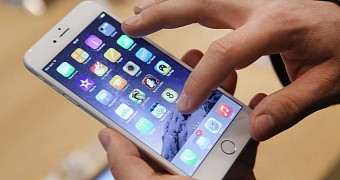A few months ago, Google launched its own wireless carrier service in the US, dubbed Project Fi. For the time being, Project Fi only works with the Nexus 6, but soon Google might be expanding the availability to other devices as well.
Now, a new report coming out of Business Insider seems to indicate that Apple is set to embark on a similar path. Like Google before it, the Cupertino tech giant might be looking to distance itself from long-time partners AT&T, Verizon, Sprint or T-mobile in order to have more control over their customers’ experience.
Apple’s service might be tailored to work with both the iPhone and the iPad and be able to switch between several networks based on the connection, signal and best speeds available at a given moment.
While Apple is yet to confirm the move, there’s a host of benefits that might explain why the Cupertino tech giant might be looking to offer a wireless carrier service.
Apple wants to have more control over customer experience
For starters, revenue coming from add-on services would go directly to Apple, only Apple and no one else. On top of that, it would be much easier to offer all-in-one services, like lower-cost carriers such as Virgin Mobile and Metro PCs are offering.
But most importantly, Apple would be able to directly service their customers, who won’t have to deal with the unsatisfactory customer service offered by US carriers (Verizon fares out the best in this scheme).
So, instead of paying carriers each month, customers will pay Apple directly to get data, calls and text. This means Apple would be offering everything you used to get from your old-school carrier, with the added benefit that the Apple SIM card will allow users to switch between networks to pick the best service.
But the Cupertino tech giant’s road to become a fully-fledged operator won’t be an easy one, mostly because Apple will have to rely on traditional networks’ infrastructure to deliver its services. Thus, in the first instance, Apple will be one of those so-called MVNO (mobile virtual network operators).
Even so, running a successful MVNO business is not easy. Disney tried doing this back in 2005 with its Mobile ESPN, which ran on Sprint’s network. But sadly for Disney it didn’t work out, as it made a huge investment which resulted in only 30,000 subscribers.
However, with a fan base like Apple’s, the Cupertino tech giant might have a better chance of succeeding.
Update: Apple has reportedly denied any plans related an MNVO cellular service. Even so, it doesn't necessarily mean that Apple will not go into this business at some point.
Remember how a while back Nokia denied any plans of launching an Android smartphone in 2016, only to come back to the statement weeks later and confirm that this was indeed what they were hoping to do.
BREAKING: Apple says it has not discussed & is not planning MVNO cellular service following reports saying it was planning on doing that.
— CNBC Now (@CNBCnow) August 4, 2015

 14 DAY TRIAL //
14 DAY TRIAL //